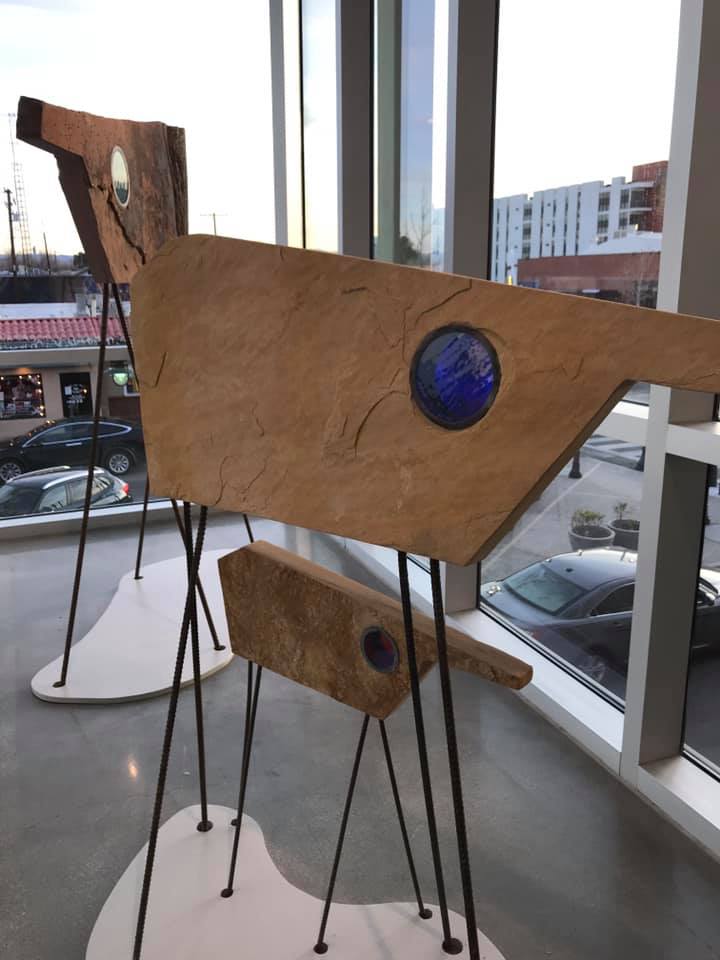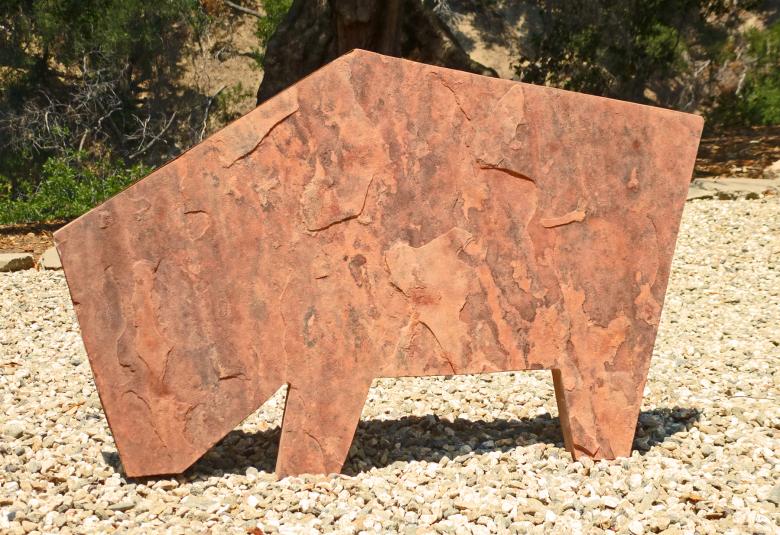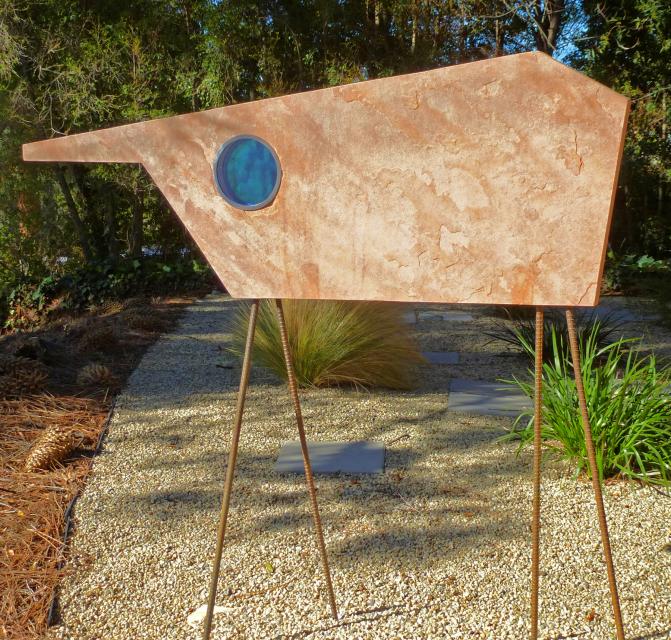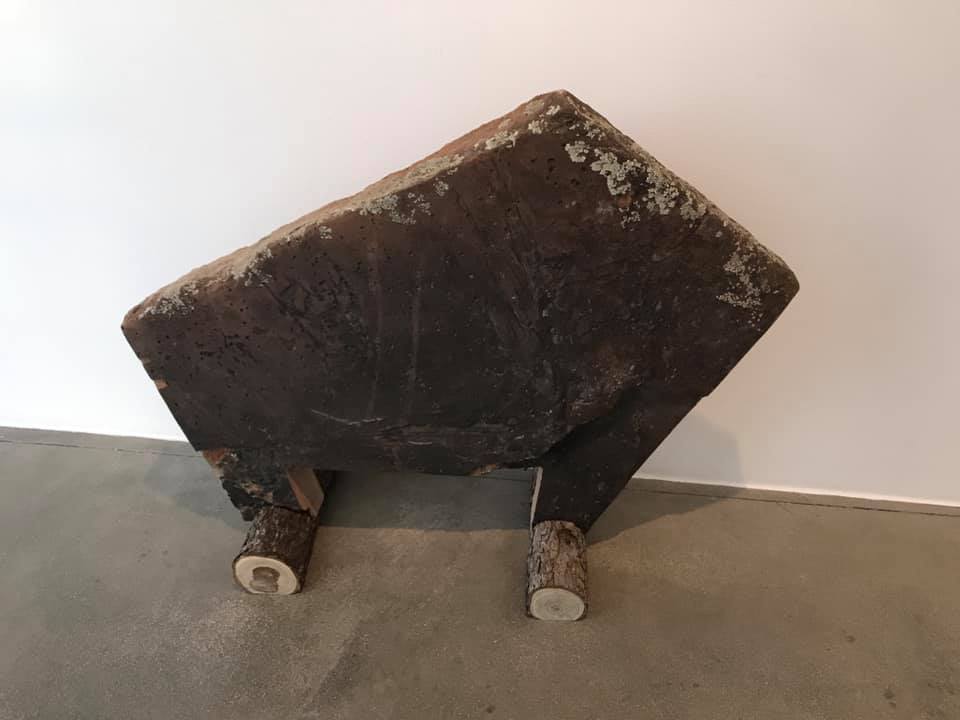 With several unique stone sculptures now on exhibit as part of MOAH’s powerful Peace on Earth, running at the Lancaster museum through April 21st, it’s a good time to take a look at Devin Thor’s powerful sculptural presence.
With several unique stone sculptures now on exhibit as part of MOAH’s powerful Peace on Earth, running at the Lancaster museum through April 21st, it’s a good time to take a look at Devin Thor’s powerful sculptural presence.
At MOAH, Thor presents three pieces from his Paleolithic Creatures stone works, raw, unique works that make extinct creatures live again as sculptures cut from sandstone. Both in their use of color: russet, gold, brown; and in their use of material, they appear as if they arose from the earth itself, creatures of a Southwestern world, of raw, open plains and red-rock wanderings.
The artist’s use of material makes these flat works fascinating in texture as well as image. Seeming tribal in nature, their beautiful simplicity serve as an elegy to the losses of the past, and a pristine prayer for a better future. Thor is a geologist as well as an artist, which is in part the likely reason for his choice of material here. The rough brown surface creates an elegant but primal visual perspective, a tribute to the beings themselves, and the land on which they roamed. His minimal approach is wonderfully relatable; he has shaped easily recognizable, universal figures that open the world of the past with hope for tomorrow.
Thor says of his stone work that it is “an homage to our prehistoric ancestors, but also an exploration of the global influence of humans on our environment…” adding that “modern humans have modified the planet and now must take on a stewardship role, otherwise we might face the permanence of extinction ourselves.”
Inspired in part by the cave paintings of Lascaux, Thor relates that he paints and sculpts using “the energy that flows from my emotional imagination. As a geologist, I explore the structure of the natural world with the logic of a scientist.”
The works displayed at MOAH include the jewel eyed “Antelope Doe and Antelope Fawn II” as well as “Sentinel Bison II.” The former pieces incorporate vividly colored stained glass as their eyes, and stand on thin iron legs.
The latter work has no crafted eye, yet the crags of the sandstone chosen to create his bison series hang as if they were fossilized fur, disguising the eye of the massive creatures.
Some bison images Thor has created are grazing, or bent; some crafted from cast iron, others from different colors of rock.
In each, there is a poignant reminder that despite the bulk, the weighty purpose of these beings, they were in the end too fragile to survive. They are a cautionary tale for preservation of other species, and our own.
Thor also creates the more whimsical wood and found objects in his Gumby Goes series. These fanciful images are based on the Claymation character of Gumby, his magical adventures, and his iconic cultural status. Despite these green wooden works witty characteristics, Thor says they represent a darker side of human nature. With gauges as eyes, a gear ringing his mouth, and an alarmed expression, “Gumby Goes Borg X2” is a study of futuristic anxiety. “Gumby Goes Pinball,” which includes pinball machine parts, is brighter in color but no less fraught with a sense of anxious awareness of the human condition. We are perhaps all being played.
Additional sculptural works include more abstract images, such as “Space Relic X01,” created using salvaged Sycamore wood, plywood, anodized aluminum, and stainless steel tubes. Again, Thor has managed to create a work both delicate and substantial, named for the space beyond us yet somehow representative of the planet on which we reside.
Thor’s sculpture are indeed a sign of our times: of life on this planet, our collective past, and our equally bound future.











